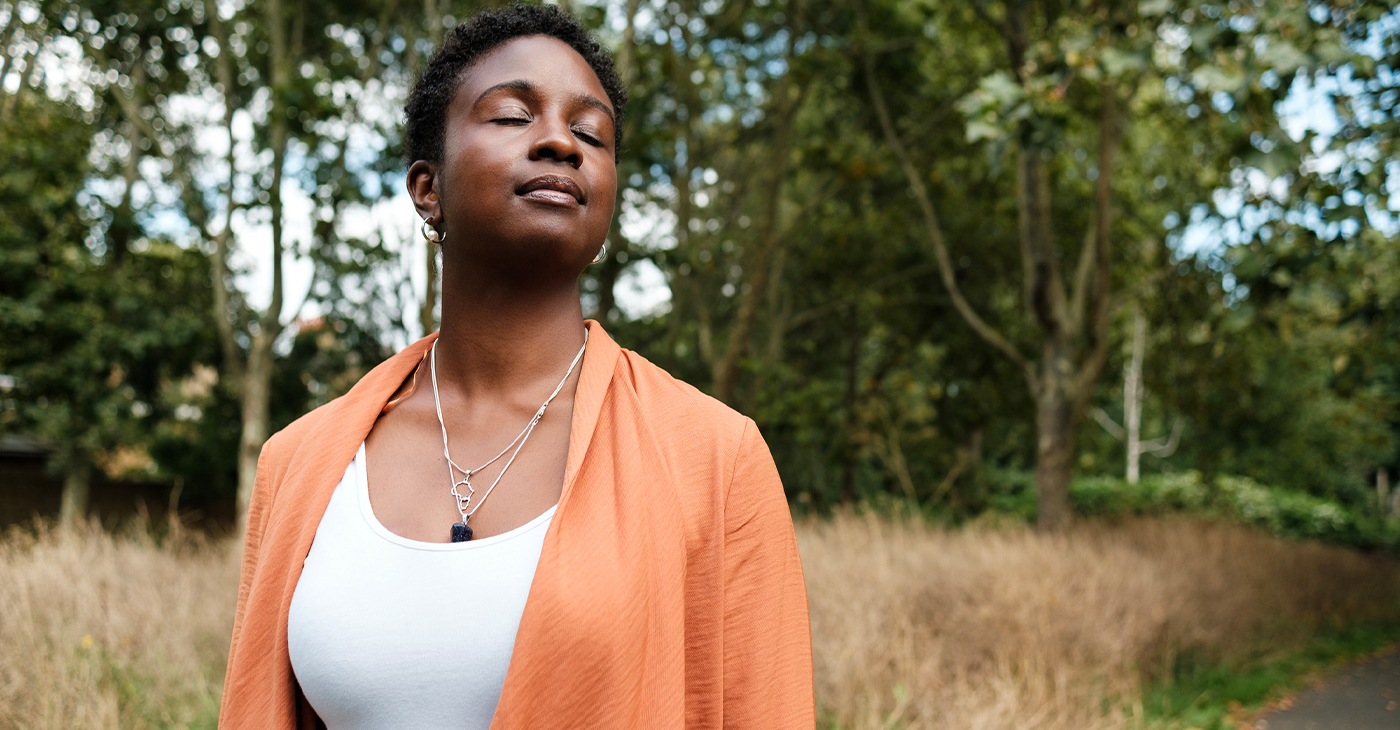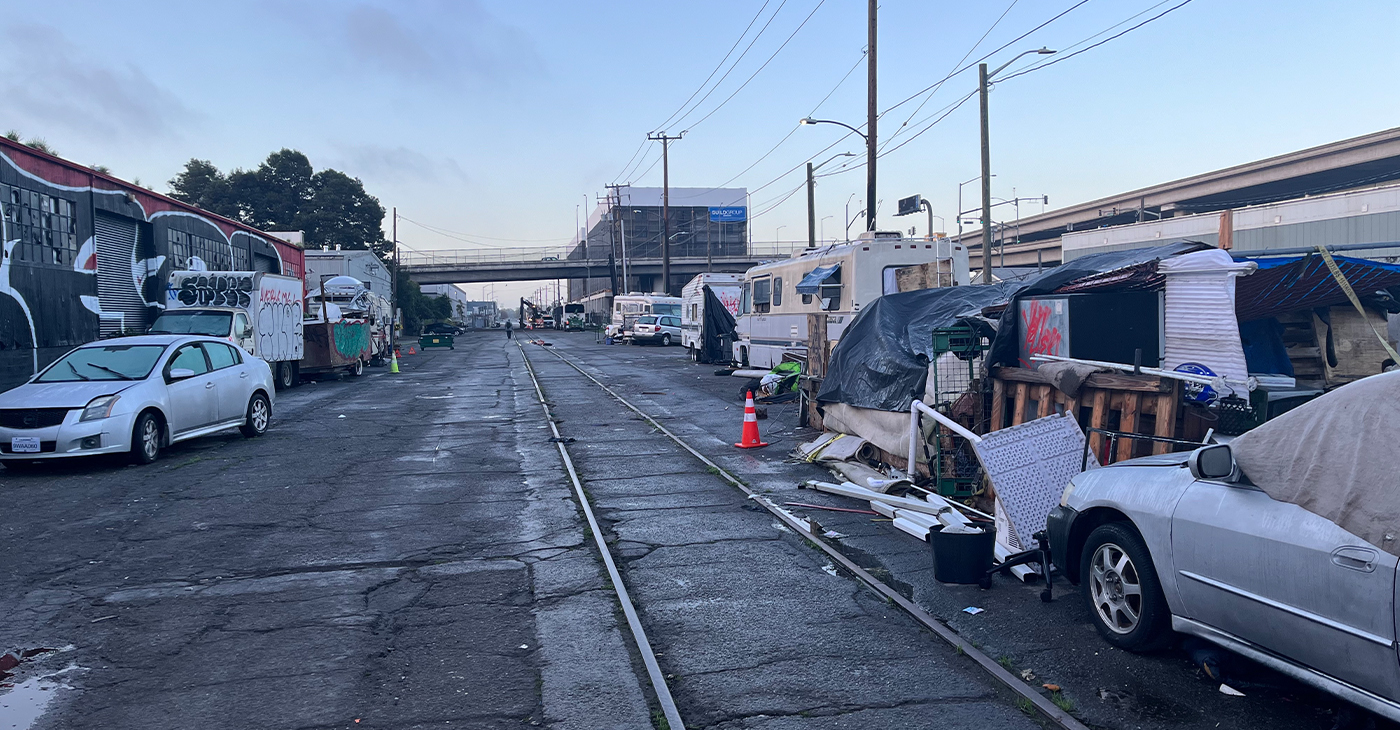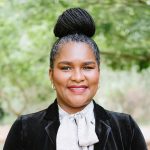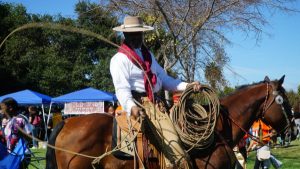Health
Supreme Court’s New Health Law Case Cuts Both Ways

In this March 28, 2012 file photo, supporters of health care reform rally in front of the Supreme Court in Washington on the final day of arguments regarding the health care law signed by President Barack Obama. Nearly five years after Obama signed his health care overhaul into law, the Supreme Court will again get to decide its fate. (AP Photo/Charles Dharapak, File)
RICARDO ALONSO-ZALDIVAR, Associated Press
WASHINGTON (AP) — The Supreme Court is taking another look at President Barack Obama’s health care law, and this time it’s not just the White House that should be worried.
Republican lawmakers and governors, too, will feel the backlash if the court invalidates insurance subsidies worth billions of dollars to people in more than 30 states.
Obama’s law offers subsidized private insurance to people who don’t have access to it on the job. Without financial assistance with their premiums, millions of those consumers would drop coverage.
Disruptions in the affected states wouldn’t end there. If droves of healthy people bail out of HealthCare.gov, residents buying individual policies outside the government market could be next. Self-pay customers would face a jump in premiums because they’re in the same insurance pool as the subsidized ones.
Health insurers spent millions to defeat the law as it was being debated. But the industry told the court last month that the subsidies are a key to making the overhaul work. Withdrawing them would “make the situation worse than it was before” Congress passed the Affordable Care Act.
The debate over “Obamacare” was messy enough when just politics and ideology were involved. It gets really dicey with the well-being of millions of people in the balance.
“It is not simply a function of law or ideology; there are practical impacts on high numbers of people,” said Republican Mike Leavitt, a former federal health secretary now heading a health care consulting firm.
The legal issues involve the leeway federal agencies have in applying complex legislation. Opponents argue that the precise wording of the law only allows subsidies in states that set up their own insurance markets, or exchanges. That would leave out most beneficiaries, who live in states where the federal government runs the exchanges. The administration and the law’s Democratic authors say Congress clearly intended to provide subsidies in every state.
While predicting a victory, the White House has not prepared consumers for the consequences of a reversal. Health and Human Services Secretary Sylvia M. Burwell repeatedly said that “nothing has changed,” even as other supporters of the law grew alarmed when the Supreme Court unexpectedly took the case.
At a Senate hearing Wednesday, Burwell refused to get into ‘what-if’ scenarios, telling Republican lawmakers she is completely focused on the current sign-up season.
With oral arguments set for March 4 and a decision expected early in the summer, here’s what’s at stake:
RED STATES IN THE PATH
Insurance losses would be concentrated in Republican-led states, which have resisted “Obamacare.”
Florida, Texas, North Carolina, Georgia, Michigan, and New Jersey are among those with the most to lose. Residents of blue states that are running their own markets would continue to receive benefits.
Because the health law’s 2015 sign-up season is still under way, it’s unclear how many millions of people could become uninsured. Two independent studies estimate around 8 million.
Not all the 37 states where the federal government is currently running insurance markets would be affected equally. Some have made progress setting up their own exchanges.
TIME TO SCRAMBLE
If the Supreme Court rules in late June, that would leave about three months until the start of the next sign-up season for coverage.
If the ruling goes against the subsidies, it’s unclear whether the courts can delay the effects for more than a few weeks, and most state legislatures are not in session during the summer.
There’s speculation that the White House could quickly roll out an administrative fix, but Obama could also toss the whole mess into the lap of the GOP-led Congress.
Technically, a tweak from Congress could fix the problem. But after repeated votes to repeal “Obamacare,” would any Republicans be willing to facilitate its rescue?
“We don’t see fixes the administration can make, and we don’t see Congress acting to fix this,” said Neera Tanden, president of the Center for American Progress, a public-policy center aligned with the White House.
REPUBLICAN vs. REPUBLICAN?
Faced with constituents at risk of losing coverage, some congressional Republicans may be willing to fix the subsidies in exchange for concessions from Obama on a long hit list of health law provisions they object to.
But other Republicans will not want to lift a finger.
“The president will say, ‘With one line of legislation, you could save 5 million people from losing their health insurance,’ and the Republicans need to have a unified response,” said Leavitt, the former HHS secretary. “If they don’t, then it creates a problem for them.”
Despite several proposals in the five years since Obama’s overhaul passed, Republicans have not coalesced around an alternative and remain hard-pressed to do so.
To complicate matters, congressional action restoring some or all of the subsidies would have to be paid for with spending cuts or tax increases.
The last time the Supreme Court ruled on the health care law, the result was a 5-4 decision upholding its central requirement that virtually all Americans must carry health insurance. This time, it won’t just be political junkies holding their breath before the announcement, but many consumers as well.
___
The case is King v. Burwell, docket No. 14-114.
Copyright 2015 The Associated Press. All rights reserved. This material may not be published, broadcast, rewritten or redistributed.
Bay Area
Mind, Body, and Spiritual Well-Being for Women Addressed in NAACP Forum in Oakland
The Women In The NAACP Oakland Branch is proud to announce the upcoming “Total You – Mind, Body, and Spirit Women’s Health Forum” scheduled for April 27 at Acts Full Gospel Church. Running from 9 a.m.-2 p.m. at 1034 66th Ave., this forum aims to provide an empowering platform for women to engage in discussions, gain knowledge, and access resources pertaining to their health and well-being.

Special to The Post
The Women In The NAACP Oakland Branch is proud to announce the upcoming “Total You – Mind, Body, and Spirit Women’s Health Forum” scheduled for April 27 at Acts Full Gospel Church.
Running from 9 a.m.-2 p.m. at 1034 66th Ave., this forum aims to provide an empowering platform for women to engage in discussions, gain knowledge, and access resources pertaining to their health and well-being.
The forum will feature renowned experts, healthcare professionals, and advocates from Genentech, John Muir Health, Sutter Health of The East Bay, Kaiser Permanente, and the Alameda County Public Health Department.
Our expert panel will address various aspects of women’s health, including physical, mental, and emotional well-being, and healthy relationships. The forum will encompass a wide range of topics such as breast cancer, menopause, reproductive health, nutrition, mental health awareness, preventive care, and much more.
Participants will have the opportunity to attend informative sessions, interactive workshops, and panel discussions led by experts in their respective fields. Additionally, there will be wellness activities, screenings, and informational booths offering valuable resources and support.
This forum is open to women of all ages and backgrounds, encouraging inclusivity and diversity in the conversation surrounding women’s health. Whether you’re seeking information for yourself, a loved one, or simply looking to connect with other women, this event promises to be enlightening and empowering.
For more information and to register for the Total You Women’s Health Forum, please visit https://www.naacpoakland.org/ or contact Dr. Delores Thompson. WIN chairwoman at (510) 328-3638.
The Women In The NAACP Oakland Branch is dedicated to empowering women, and young teen girls. We look forward to your participation in this important event.
To register, go to https://www.naacpoakland.org/events/the-total-you-womens-health-forum
Alameda County
Oakland Conducts Its Biennial ‘Point in Time’ Homelessness Count
Oakland, along with other cities in Alameda County, conducted their biennial ‘Point In Time’ census count on Feb. 1 to gain a thorough understanding of the size and dispersion of the homeless population in the region. The Point In Time (PIT) count is federally required by the Housing and Urban Development Department as a requirement to receive funding and resources to tackle homelessness in the area.

By Magaly Muñoz
Oakland, along with other cities in Alameda County, conducted their biennial ‘Point In Time’ census count on Feb. 1 to gain a thorough understanding of the size and dispersion of the homeless population in the region.
The Point In Time (PIT) count is federally required by the Housing and Urban Development Department as a requirement to receive funding and resources to tackle homelessness in the area.
David Modersbach, Grants Manager of Alameda County Health Care for the Homeless program, said that the methodology this time around was different, as this count had a much more personal “lived experience” aspect that previous counts did not have.
In 2022, the county relied more on statistical extrapolation and assumptions, but this year’s survey questionnaires allowed for details on substance abuse issues, how long someone has been living without proper housing, what resources people are in need of and much more.
“[The PIT count is] a critical opportunity for the county, Continuum of Care, and cities to understand the magnitude of homelessness in Alameda County. [The count] enables us to better allocate resources and implement effective programs to tackle this issue head-on in a compassionate and inclusive way,” Modersbach said.
St. Mary’s Center was one of the many meeting hubs across the county that hosted volunteers and community officials the morning of the count. The organization has been deeply involved in the effort to provide resources for unhoused people and others in need.
St. Mary’s is a nonprofit in West Oakland that helps seniors and preschool families with food and housing. Last year, the organization helped about 50 seniors find housing after they had fallen on hard times.
Sharon Cornu, executive director of St. Mary’s, said a lot of the older couples and individuals that come into the center have borne the brunt of the skyrocketing cost of living in the Bay Area. The most recent influx of seniors St. Mary’s has seen coming in for help has been made up of people who were evicted when the COVID-19-related moratorium on rent payment ended.
“Seniors are the fastest growing segment of the unhoused and the incredibly high cost of housing is driving them to the streets,” Cornu said.
Among the volunteers were workers with Operation Dignity, a nonprofit organization that helps veterans and those living on the street find shelter, transitional housing and supportive services.
“These are our stomping grounds,” Ivan Magana, program manager for Operation Dignity said.
Magana stated that his team was extremely familiar with the people residing in the encampments they were conducting the count in since Operation Dignity made many visits to these areas while doing community outreach. He said they had even informed some of the unhoused people they knew about the count a few days prior so they would not be alarmed when the enumerators showed up early in the morning to conduct the count.
Not everyone got the memo though, as the volunteers encountered an almost violent situation around the 6 a.m. when a young woman living in a bus yelled at the Operation Dignity workers to leave her alone.
Luckily, the three-year experience Mangana has working with Operation Dignity and his knowledge of therapeutic health services, equipped him with the techniques needed to deescalate the tension. The woman soon realized who the volunteers were and apologized, he said.
Another volunteer and Operation Dignity worker, Yolanda Kirkpatrick, noted that she was initially hesitant because of the early schedule. She felt the time deterred others from participating, too.
Her prediction would come true as the hours went on and they continued to walk along 24th St in downtown Oakland and there was very little activity on the streets.
The volunteers shared similar sentiments. Although the community the people they were engaging for the count and surveys encounter tend to distrust outsiders, the PIT count was necessary for the city to receive the appropriate level of federal funds to address a crisis that is spiraling out of control in California.
A full analysis and report of the count will be made available in the summer.
Community
For Cervical Cancer Month, Medical Community Focused on Education
January was Cervical Cancer Awareness Month. Physicians, advocates and others in the medical community commemorated the month by raising awareness about a form of cancer they say is highly preventable and treatable. Cervical cancer is caused by a virus called the human papillomavirus (HPV) and it develops slowly over time but can be prevented with proper care in girls as young as 13 years old.

By Magaly Muñoz
January was Cervical Cancer Awareness Month.
Physicians, advocates and others in the medical community commemorated the month by raising awareness about a form of cancer they say is highly preventable and treatable.
Cervical cancer is caused by a virus called the human papillomavirus (HPV) and it develops slowly over time but can be prevented with proper care in girls as young as 13 years old.
Sonia Ordonez, an OBGYN and gynecology surgeon at Kaiser Permanente, stated that as soon as people with cervixes reach the maturity reproductive age, they should start taking preventative measures like getting the HPV vaccine. The vaccine involves a series of two-doses for people aged 9 through 14 or three-doses for people 15 through 45 years old.
“I see a lot of young women who can’t remember or may not have gotten [the vaccine] when they were younger, or maybe got one, but we can give them the series of vaccines and restart at any point in time,” Ordonez said.
She said that cervical cancer is not the only cancer caused by HPV. Strains of the virus can also lead to throat, anal and penile cancers.
Screening is also an effective way to check for cervical cancer and should be done every three years after someone turns 21, doctors recommend. It is best to start as early as possible to catch occurrences early.
Ordonez said that this cancer is also more likely found in people of color and has led to more deaths overall.
A Mayo Clinic article published last month stated that Black women are more likely to be diagnosed and die of cervical cancer, compared to White women in the U.S.
2,000 Black women are diagnosed every year with cervical cancer and 40% die as a result.
“This disparity is not due to genetic differences among White, Black or Hispanic women, but rather related to systemic racism, access to healthcare and socioeconomic factors,” Dr. Olivia Cardenas-Trowers, a Mayo Clinic urogynecologist, said in the article.
Ordonez stated that immigrant women are also highly susceptible to the cancer, as many Latin American countries may not have accessibility to screenings or lack of insurance makes it harder for them to get tested.
Hispanic women are 40% more likely to be diagnosed with cervical cancer, and 30% more likely to die from it, as compared to non-Hispanic White women, according to the Office of Minority Health.
Family medicine physician, Joy Anyanwu, stated that the pandemic contributed to hesitancy about getting cervical cancer screenings among some women. Other factors are people’s aversion to vaccines, parents not wanting to believe that their children are or will become sexually active, and doubt about the overall effectiveness of the vaccine.
“The vaccine is very safe — over 97% effective in preventing cervical cancer,” Anyanwu said. “Even if you aren’t having sex, the earlier you start would actually help.”
Anyanwu said she understands that parents might not want to ask questions about their children’s reproductive health, but it’s a mindset that can be a barrier to having important conversation about prevention or care.
To keep families their families and communties healthy, the doctor emphasized that people should prioritize keeping up with their vaccine series and going to screenings every year.
-

 Activism4 weeks ago
Activism4 weeks agoOakland Post: Week of March 27 – April 2, 2024
-

 #NNPA BlackPress4 weeks ago
#NNPA BlackPress4 weeks agoBeloved Actor and Activist Louis Cameron Gossett Jr. Dies at 87
-

 Community1 week ago
Community1 week agoFinancial Assistance Bill for Descendants of Enslaved Persons to Help Them Purchase, Own, or Maintain a Home
-

 Activism3 weeks ago
Activism3 weeks agoOakland Post: Week of April 3 – 6, 2024
-

 Business1 week ago
Business1 week agoV.P. Kamala Harris: Americans With Criminal Records Will Soon Be Eligible for SBA Loans
-

 Activism2 weeks ago
Activism2 weeks agoOakland Post: Week of April 10 – 16, 2024
-

 Community1 week ago
Community1 week agoAG Bonta Says Oakland School Leaders Should Comply with State Laws to Avoid ‘Disparate Harm’ When Closing or Merging Schools
-

 Community6 days ago
Community6 days agoOakland WNBA Player to be Inducted Into Hall of Fame


























































